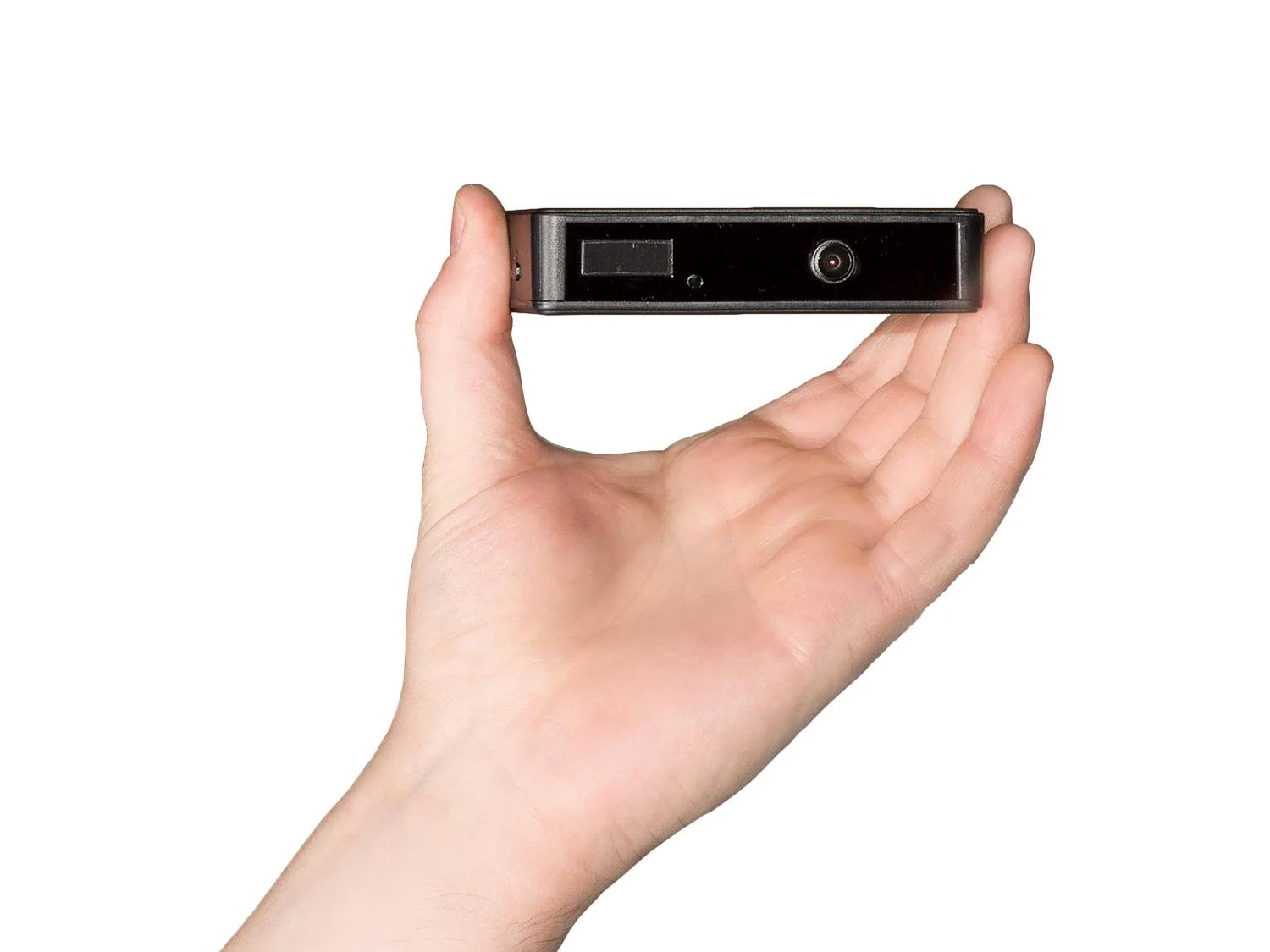
How to disguise a camera in your home
Thanks to the accessibility of modern security cameras and smart home security technology, more households than ever before now have the ability to safeguard their homes and families against potential intruders. However, with the prevalence of this technology, more and more people need to know how to best position their home security cameras to maximise their effectiveness.
Although proudly displaying your home security cameras can be an effective deterrent to potential intruders and burglars, it can also be very worthwhile to install hidden cameras that catch people out when they don’t know they’re being watched. Keep reading to learn why you should install hidden security cameras, the legality of spy cameras, and our top tips for disguising cameras in your home and garden.
Why should you use a hidden camera?
A common piece of advice is to install your cameras in plain sight and install CCTV signs alongside them to advertise the presence of your security system. This can act as a deterrent to potential criminals, who’ll much rather target an ‘easier’ property. However, this also gives criminals the opportunity to find and disable your cameras to get around your security system.
Installing hidden cameras can be a fantastic solution to this problem. Here are some other reasons why disguising your security cameras could be the right choice for you:
- As suggested by the name, hidden cameras are very hard to spot. This means that people act naturally around them, making it easier for you to monitor people’s behaviour covertly.
- Spy cameras and hidden cameras are a great tool for those who hire people to work in their home, such as carers, nannies, builders and other types of tradespeople. With these covert cameras, you can make sure that these people are doing their jobs properly and not damaging your home or doing anything inappropriate.
- Visible security cameras can interfere with the appearance of your home, whereas hidden cameras preserve its aesthetics while still keeping you safe.
- Disguised cameras are much less likely to be vandalised.
Are hidden cameras legal?
The laws in the UK surrounding hidden cameras can be a bit complex, so it’s important to get to know them fully before placing any covert cameras on your property.
It’s legal to record footage of your own property for security purposes, but the rules can get a bit more unclear beyond this. Although some people think that any footage outside of your property is illegal, you should actually be in the clear as long as you do all you can to limit the surveillance to your own property. According to the Information Commissioner’s Office:
“The use of recording equipment, such as CCTV or smart doorbells, to capture video or sound recordings outside the user’s property boundary is not a breach of data protection law.
People should try to point their CCTV cameras away from their neighbours’ homes and gardens, shared spaces or public streets. But this is not always possible.”
Therefore, it’s perfectly legal to place CCTV cameras on your own property for security reasons, and you won’t be breaching data protection laws. However, you should make sure you’re trying to only capture footage of your property, since deliberately recording your neighbour’s property, for example, would be unlawful.
The same rules apply to hidden cameras – you can install covert cameras as long as you’re only placing them on your property, only capturing footage for security purposes, and pointing your cameras away from public footpaths and neighbours’ homes.
However, it is illegal to place hidden cameras in areas where people have a reasonable expectation of privacy, such as in bathrooms or bedrooms. Cameras should be kept in areas like living rooms, hallways or kitchens, and ideally, they should be facing vulnerable access points like doors and windows.
If you’re unsure of the legality of your security system, always get legal advice first. For example, if you want to use your hidden cameras to monitor a carer or tradesperson, this can count as surveillance of an employee, which involves different restrictions.
Top tips for disguising cameras indoors and outdoors
Now that you've decided to install covert cameras in your home and garden, you need to think about how you’re going to place them so that they capture the footage you need without attracting any attention. Check out our top 8 tips for hidden camera placement below:
1. Disguise with leaves and bushes
For outdoor security cameras, a simple, classic trick is to conceal the camera and wires using the foliage from your garden. If you have a large, dense hedge, this would be the perfect place to hide a small camera. Simply nestle it between the branches and leaves for maximum secrecy, while making sure the foliage doesn’t obscure the camera lens.
It can be tricky to properly conceal the hidden camera within the bush without obscuring the lens, so if you can’t get it to look disguised enough, another option is to drape some loose leaves around the camera yourself or purchase a natural-looking camera cover. This can have the additional benefit of providing some protection from the elements, but bear in mind that you’ll still need a camera with a suitable IP rating if you plan to use it outdoors.
Remember that you can also use trees, flowers and plant pots to disguise your spy camera. As long as your camera blends in adequately with its surroundings and is pointing towards vulnerable access points, it will be very effective at catching criminals in the act.
2. Hide under the eaves
To get the best vantage point for your CCTV camera, it’s best to place it as high as you can, giving you footage of a much wider area. With this in mind, one of the most popular places to install covert cameras is under the eaves of your roof, as this gives you great coverage of your property without impacting your home’s kerb appeal.
The overhang created by the eaves creates a brilliant hiding place for security cameras. Plus, it also provides much-needed shelter for this equipment, protecting it from heavy rain and windy conditions. The only inconvenience with this camera placement is that you’ll need a ladder or a professional to do it for you. Since a camera under the eaves will be much harder to access, it’s best not to go for a camera with batteries that need to be replaced regularly. Instead, go for a wired security camera or one with solar panels
3. Hide in a birdhouse
If you’ve already got a birdhouse in your garden, why not make it a multipurpose feature by using it to conceal your spy camera? All you need to do is drill a small hole for the lens and place the camera inside the birdhouse, making sure birds can still access it like before.
Not only does a birdhouse provide shelter for your camera equipment, but it can also be a great vantage point for your whole garden. Unlike hiding a camera within a bush, placing it inside a birdhouse means it has an elevated position, so it can capture clearer and more useful footage of intruders.
4. Place on a bookshelf or tall cabinet
Disguising spy cameras inside your home can often be easier since you can hide them among your regular household clutter. For example, a bookshelf full of books, family photos and other knick-knacks can provide the ideal hiding place for your camera – simply place a small camera between some books or ornaments to discreetly capture footage. Similarly, display cabinets provide a very convenient place to hide your camera among other household items while also giving it a great view of an entire room.
Again, placing your hidden camera up high will give it a much better vantage point, which means you’ll capture much clearer and more useful security footage. Plus, cameras placed high up on tall cabinets and cupboards (such as those in your kitchen) will be much less noticeable.
5. Hide inside everyday objects
Alternatively, you can get creative and start hiding your cameras inside everyday objects, including:
- Tissue boxes
- Stuffed toys
- Storage boxes
- Plant pots and vases
- Picture frames
- Lampshades
- Wall-mounted air fresheners
- Smoke detectors
- Fake candles
- Shoeboxes
By hiding your camera inside these inconspicuous objects, you can record footage discreetly while preserving the appearance and comfort of your home.
6. Use spy cameras
Particularly when you’re hiding your cameras inside everyday objects, you need a much smaller piece of equipment that can fit into these spaces. Covert spy cameras are designed with this in mind. These very small cameras can easily be placed in hidden spots like the inside of boxes or between your bookshelves, and they’re often battery-powered for extra convenience. Once they’re in position, you can simply leave your cameras to do their job. You can even purchase motion detector spy cameras, which save power by only capturing footage when they’re triggered.
Pinhole cameras
Need an even smaller camera for absolutely undetectable surveillance? Our range of pinhole cameras is perfect for you. These tiny cameras can be hidden inside the smallest spaces, such as small tissue boxes, and they only need a gap of 2 mm to capture footage. For even tricker areas, you can use wireless pinhole cameras to get the job done, although wired cameras will usually give you better image quality.
7. Use disguised cameras
Another super covert option is to use disguised cameras, which look like other unremarkable household objects. For example, you can get phone charger cameras, smoke detector cameras, alarm clock cameras and more, allowing you to capture footage in plain sight without anyone knowing.
8. Use battery-powered cameras
Overall, if you’re placing your hidden camera in a hard-to-access location, it’s best to opt for a wireless battery-powered hidden camera. Another benefit of these cameras is that you won’t have to conceal any wires, which can look pretty suspicious if they’re coming out of a box of tissues!
However, one potential issue with wireless cameras is that they can sometimes suffer from signal interference and lower-quality images, so if picture quality is really important for you, a wired camera may be a better option. Plus, battery-powered cameras require more regular maintenance as you’ll have to replace the batteries, so you’ll either have to choose a wired option or time your battery swaps well to avoid detection. Many security cameras do have a long battery life, so this shouldn’t be a huge problem to deal with.
Still not sure what’s right for you? Check out our blog post on whether wired or wireless home security is the better option.
Frequently asked questions about hidden cameras
Can a phone detect a hidden camera?
It can be possible for a phone to detect a hidden camera by picking up infrared light. You need to make the room as dark as possible, scan the room with your phone camera, and then see if you can spot any lights (usually purplish-pink). This could indicate the presence of a hidden camera.
Are spy cameras legal in the UK?
Yes, as long as you only use them on your own property for security reasons and don’t put them in private areas like bathrooms or bedrooms.
Do hidden cameras have audio?
Not always, but many of our hidden cameras here at SpyCameraCCTV record both audio and video.
Looking for covert cameras? We’ve got a huge range of spy cameras, pinhole cameras, disguised cameras and spy camera systems to help you catch out criminals or keep an eye on suspicious people in your home. Shop today to protect your property, or get in touch for personalised advice on your home or business security.

